You don’t need to go all the way to the East Coast to find cicadas; we’ve had several submissions of cicada sightings around Missoula and western Montana this week. The early arrivals are making their way above ground as spring settles in, and other species will continue to emerge throughout spring and summer. The species we have here are small and easily overlooked – but like their east-coast counterparts, you’ll usually hear them before you see them.
Submit your bug pictures to bugid@missoulabutterflyhouse.org (and remember to include your name, the date, and the location where you took the photo)!
Header Photo: Cicada exoskeleton (Family Cicadidae)
Kelly Dix, May 17th, 2024. Kootenai Creek Trail, Ravalli County, MT.
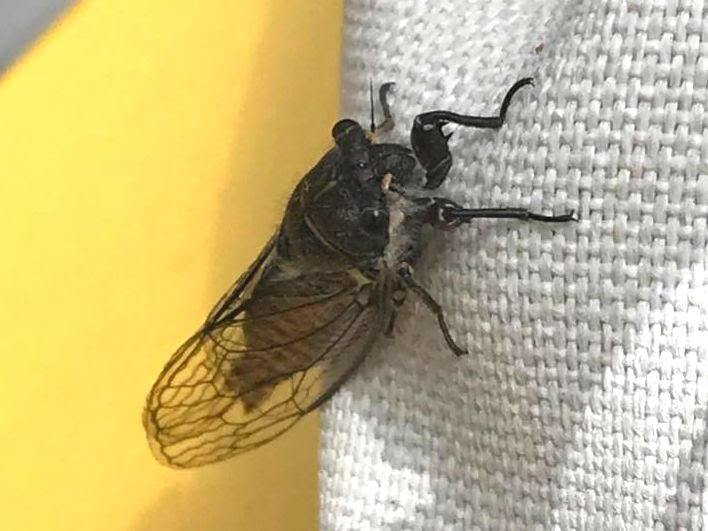
Wing-tapping Cicada
Platypedia sp.
Are you bummed you’re missing out on Cicadamania on the East Coast? You can still find some of the noisy bugs here! In Montana, we have 17 species; they spend two to five years living underground in their nymph stage, feeding on tree roots. Their emergence times are not synced like the 13- and 17-year cicadas, making them less noticeable than their east-coast relatives. Cicadas are the only insects that use a percussion mechanism for sound. Males have a ribbed membrane that vibrates with their strong muscles, making a rapid buzzing or clicking sound amplified by their air-filled abdomen.
David Lorenzo, May 15th, 2024. Bonner, MT.
Flying Saucer Lady Beetle
Anatis rathvoni
This lady beetle’s common name gets our vote for most charming. Their very angular outline is unlike any other North American lady beetle, and their helmet shape, with a flared “rim,” is reminiscent of a classic 1950s flying saucer. This genus includes our largest (7-10mm) lady beetles, with four North American species usually found in trees. This species hunts aphids, caterpillars, sawfly larvae, and other soft-bodied insects in pines and conifers.
Kelly Dix, May 17th, 2024. Kootenai Creek Trail, Ravalli County, MT.
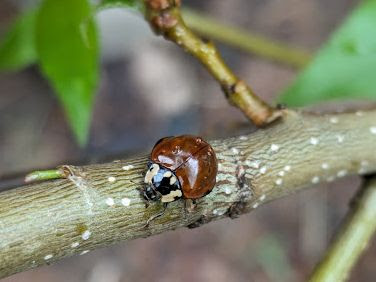
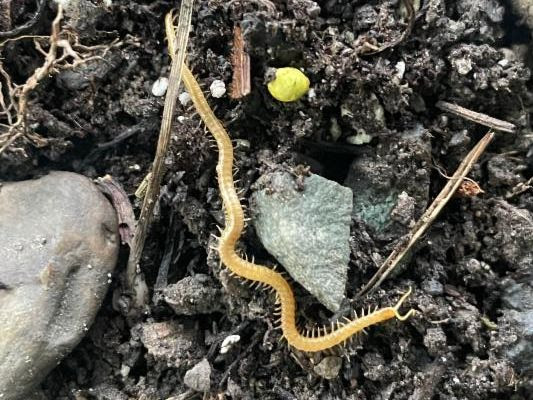
Soil Centipede
Order Geophilomorpha
Soil centipedes comprise the largest centipede order, with 230 genera and over 1,000 species. They are highly elongated and move through the earth like earthworms, contracting and elongating their bodies to push through the soil. As subterranean animals, they are eyeless, having no need for vision below ground. They are so perfectly adapted to underground life that their order name, Geophilomorpha, comes from ancient Greek, meaning “formed to love the earth.”
Carolyn Taber, May 21st, 2024. Missoula, MT.
Priacma Bleach Beetle
Priacma serrata
The Priacma Bleach Beetle is the only living member of the genus Priacma. As a member of the family Cupedidae (reticulated beetles), they have the characteristic pattern of small square “windows” on their elytra. But you may be wondering where the name “bleach beetle” comes from. Males of this species are strongly attracted to the scent of bleach, suggesting that bleach contains chemical components similar to the pheromones given off by females. This species is found largely in the Pacific Northwest; from British Columbia to central California, and as far east as western Montana.
Marti Brandt, May 12th, 2024. Missoula, MT

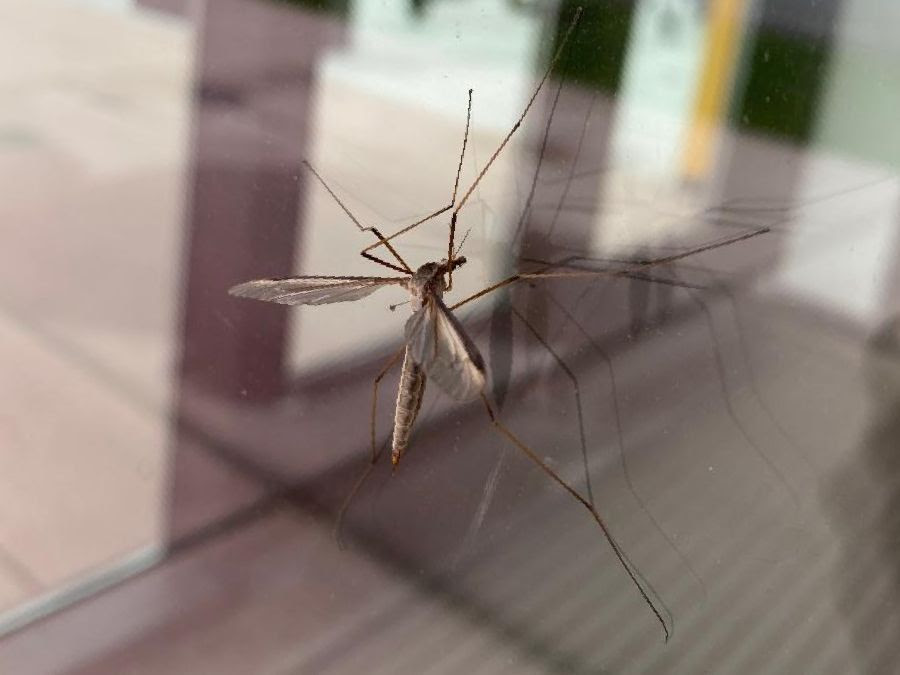
Marsh Crane Fly
Tipula oleracea
With their slender body and stilt-like legs, crane flies look like mosquitoes on steroids. But don’t worry, they’re not out for blood. Adult crane flies only live about 10 to 15 days; their primary purpose is to mate. The females will lay eggs in a suitable habitat, which, depending on the species, can range from water, soil, or a rotten log. The developing larvae feed on decaying organic matter and plant roots; if there are several in a given area, they can cause significant crop damage. The adults feed very little, occasionally nectaring at flowers but preferring to use their short time as adults to mate.
Brenna Shea, May 24th, 2024. Missoula, MT.
Nevada Bumblebee Queen
Bombus nevadensis
This Nevada Bumblebee queen was found in the most unlikely of places. Nevada bumblebees are unmistakable and hard to miss, especially when you find one in your laundry. Travis’ wife was removing clothes from the dryer when she heard a loud buzzing from the laundry basket. The bee became dislodged after she shook out the clothes – a little dazed but probably okay. She was likely inspecting their dryer vent as a place to build a nest, but wound up tangled in the laundry instead.
Travis Homanick, May 21st, 2024. Missoula, MT.

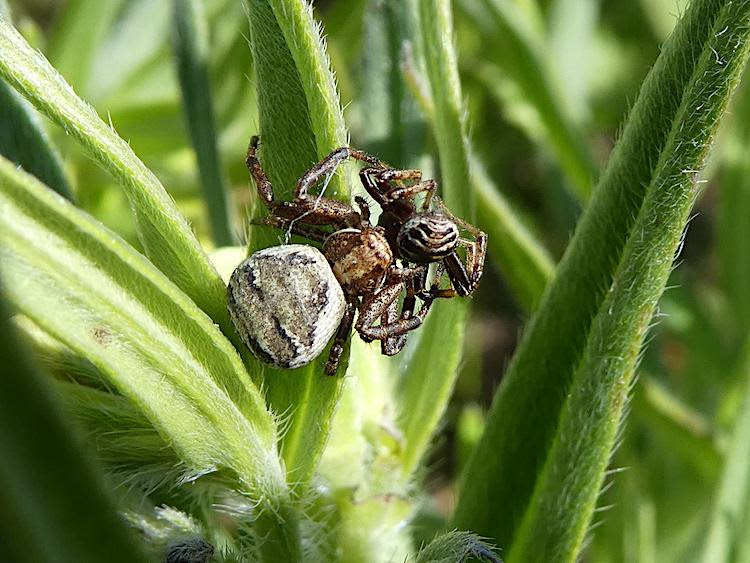
Ground Crab Spider
Xysticus sp.
Life is tough for male spiders. They spend their adult years searching for a mate and occasionally wind up as dinner instead. It’s unknown if this male managed to mate before his demise; males in this genus approach potential mates and bind their legs with silk to prevent attacks. You can even see silk remnants on the legs of this female. Unfortunately for him, it didn’t quite work out.
Glenn Marangelo, May 11th, 2024. CSKT Bison Range, Charlo, MT.
Oil Beetles
Meloe sp.
We’ve seen oil beetles before, but… not like this. Pictured here are two males competing for a female; the large female is on the bottom, and the two smaller males are on top. Males have “kinked” antennae to help them grasp females during mating. While we wouldn’t advocate for disrupting insect relations of any kind, these beetles are members of the blister beetle family and exude a chemical that causes painful blistering and burning in humans.
Shauna White Bear, May 18th, 2024. Middle Cottonwood Trail, Bozeman, MT.
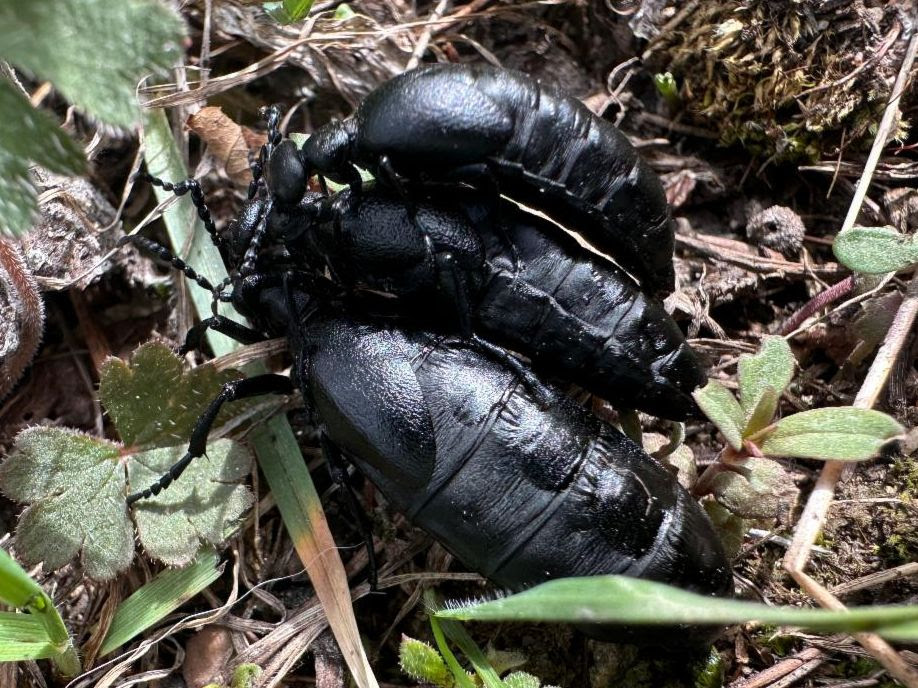
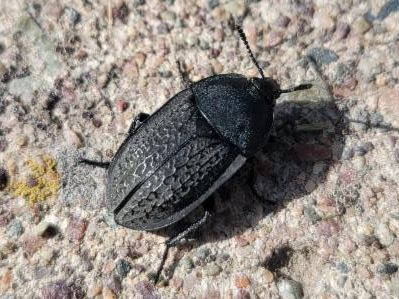
Garden Carrion Beetle
Heterosilpha ramosa
There are only two species in the genus Heterosilpha and about 200 species of carrion beetles (family Silphidae) worldwide. Unlike many insect families, most of the species diversity occurs in temperate regions (as opposed to the tropics, where it is thought they are outcompeted by ants and flies). As scavengers, they feed on dead and decaying organic material, including animal carcasses (hence the common name, carrion beetles).
Morgan McNeill, May 15th, 2024. Lolo, MT.
Spider Wasp
Family Pompilidae
Spider wasps are fierce-looking predators that hunt down and paralyze spiders to feed their offspring – usually while the spider is still alive. Many species can subdue spiders much larger than themselves, and the most famous members of this family are the tarantula-hawk wasps of the desert Southwest. The adult’s diet is not as gruesome, with many species nectaring at flowers. Keep your eye out for these solitary wasps, constantly moving and flicking their wings as they dash out and about in search of spiders.
Heather McKee, May 10th, 2024. Missoula, MT.
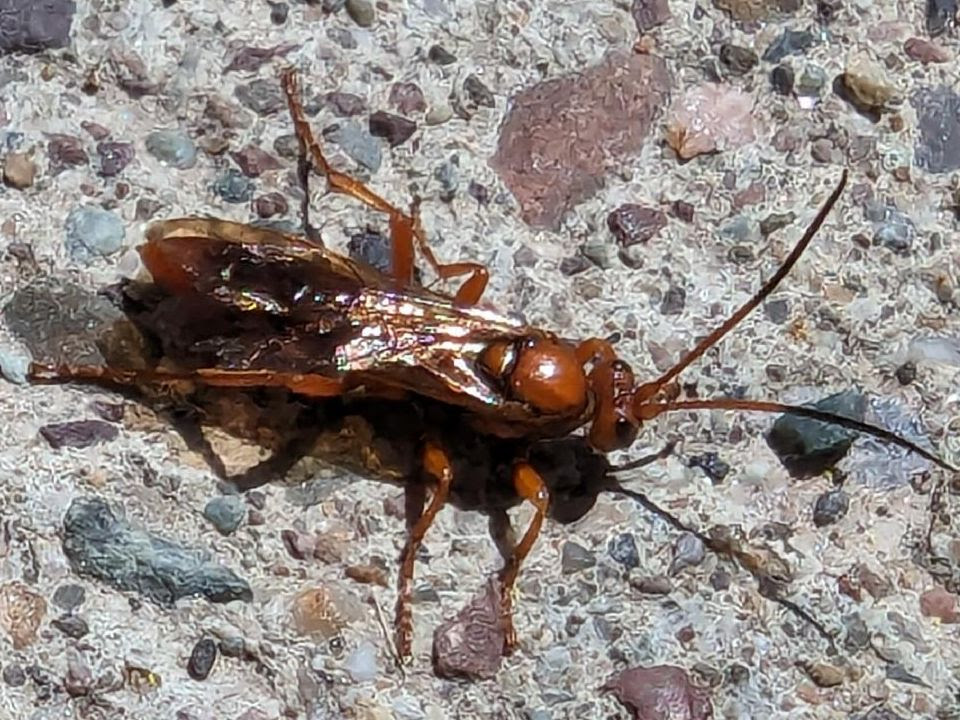
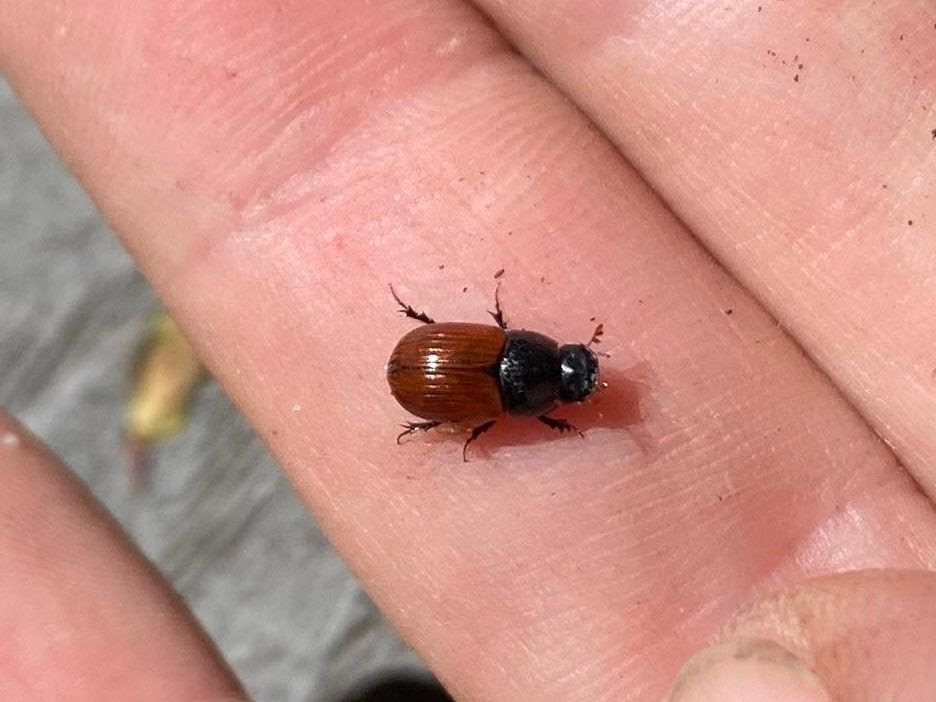
Red Back Dung Beetle
Aphodius fimetarius
Within moments of laying down some fresh topsoil, this little dung beetle landed in Brenna’s garden beds and began exploring. While only about .25 inches long, they make up for their diminutive size with their tireless work. Although this particular species is a non-native from Eurasia, they lend a helping hand in dealing with horse, cow, and other herbivores’ poop. We’d be in a pile of trouble without them.
Brenna Shea, May 11th, 2024. Missoula, MT.
Johnson’s Jumping Spider
Phidippus johnsoni
Johnson’s jumpers are Montana’s most colorful jumping spiders. Both sexes have a bright red abdomen, black cephalothorax, and iridescent green chelicerae. The male’s abdomen is entirely red, whereas the female’s has a black mark down the center and often shows some yellow or tan coloration as they grow older. In addition to being some of the most colorful, they are one of the largest jumping spiders in western North America. They are not dangerous to humans, but their striking coloration often leads to confusion, as many mistake them for the infamous black widow.
Tyler Brett, May 22nd, 2024. Florence, MT.
